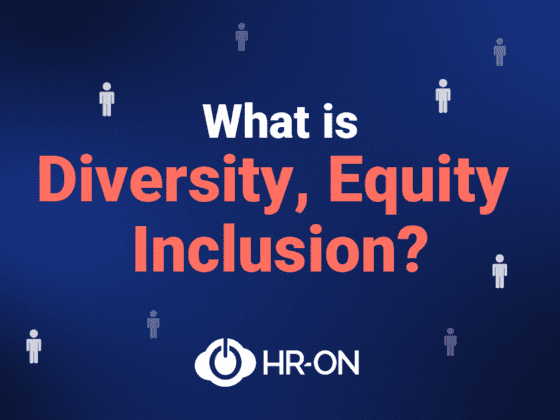Diversity is not just a goal, but a means to a better and more competitive business. Get two tools to create a more diverse workplace.
Diversity in the workplace has two dimensions; one moral and the other economic. Although most can agree that all candidates should have equal opportunities and conditions in the labour market, the financial benefits have not always been clear.
ISS (International Service System), the world leading facilities services company based in Copenhagen, has studied more than 321 companies in 12 industries (2016). Here, they state that on average, many companies earn 5.7 percent more than their competitors. If you compare the companies in terms of how diverse their management is, the companies with highly diverse management earn an average of 12.6 percent more than their competitors.
So you can see that diversity in the workplace also brings financial benefits. But how do you create diversity? We have talked to diversity expert, Birgitte Baadegaard, and an experienced recruiter, Ali E. Cevik, CEO of HR-ON, to get a better understanding of this topic.
The first step towards increased diversity
Birgitte Baadegaard often meets companies that have a positive outlook on diversity in the workplace. However, they do also express doubts about how to start working practically on their goal to increasing diversity:
“Diversity is variety, and when you start to work with it, you discover and benefit from the advantages of variety. When I speak of variety it is primarily referring to gender. However, it can also relate to ethnicity, age, sexual preferences and religious beliefs, to name just a few other parameters”, says Brigitte.
There are clear benefits to be gained from working with diversity. Birgitte believes that a company must reflect on the current level of diversity in their organisation to establish a true understanding of what they can do to move forward. This reflection can bring, simultaneously, harsh truths and enriching new knowledge.
Reflect on the current diversity of the business
According to Birgitte, we can see that in most companies today, management and development are dominated by KPIs and figures. Therefore in order for diversity to be beneficial, it must therefore be measurable in terms of where the organisation is now and what can be gained by changing focus. The gain from diversity in the workplace is 12.6 percent more earnings, but you must first understand the opinion and experience of your employees.
“Start using questionnaires and qualitative interviews to understand more about the following points. What are the employees experiencing in the office? Inquire about the perception of promotion opportunities, values, communication style and leadership style. Do they feel that the leadership listens to the employees, is it dialogue oriented, is it honest, is it top-down, is it informal or formal? ”Says Birgitte.
Also read: Find out the level of diversity in your company
Birgitte often finds that the responses to such a questionnaire, highlight to leaders issues or ‘gaps’ in the business. The results may not be as you expected. You can also analyse whether men and women have different perceptions of the organisation.
A tool and a signal
The survey is only the first step towards increased diversity in the workplace. According to Birgitte, the most important step comes after analysing the results and understanding the gaps or challenges in the business.
“After doing this kind of questionnaire, there must be a statement from the management that now you want to do something about the results. You can then elaborate on this in newsletters, the annual report or in a top leader’s speech at a summer party. But the situation needs to be articulated, because this shows a true commitment to making a change.”
The most important thing is to show the efforts all the way through the levels of the business. Not only HR, but also the top management should openly declare the goal of increasing diversity for the entire organisation. There is a big difference between talking about diversity and actually creating it.
Let yourself be surprised
Ali E. Cevik has worked for many years with value-based recruitment and diversity. According to him, value-based recruitment, like understanding your current diversity, is part of the overall effort to increase diversity in the company.
“Diversity in the workplace is not something you just get. It’s about making a dedicated effort to connect with the less obvious profiles or types of people you wouldn’t normally recruit. You can, for example, do this by sorting the candidates”.
Here Ali suggests, as an example, choosing obvious profiles. From there, you can dedicate your efforts to connected with some of these profiles. They can often surprise the hiring committee with some skills or traits that may not have previously been considered.
Recruit diversity
Now you may already be slightly skeptical about the idea of sorting the candidates. But Ali Cevik explains that in fact this act of sorting may be an advantageous for those candidates who may not usually be the obvious choice.
“You have to refrain from seeing sorting as a negative thing. Instead, of choosing the you usually would, this sorting can help you get more diversity into the business. You can focus on, for example, women or people with different ethnic backgrounds.
Ali often finds that the HR and recruitment teams are not usually lacking motivation to recruit diversely. What they are lacking is often the necessary tools and the support of management.
“For diversity in the workplace to succeed, you will need a flexible recruitment system, as well as insight into your company’s current employee portfolio and support from management. Then you can look forward to the positive results,” Ali concludes.
This article was originally published on 17th February 2016





